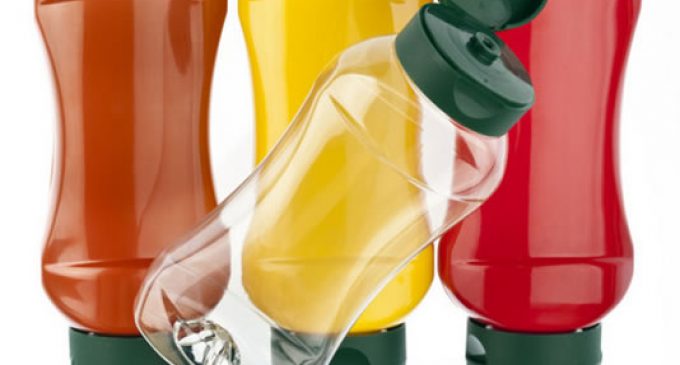SIPA delivers non-aseptic ketchup bottle

SIPA has developed a non-aseptically-filled squeezy plastic ketchup bottle, which it claims overcomes many traditional design challenges of hot fill applications and provides a cost-effective alternative to aseptic versions.
One of the biggest issues presented by hot fill methods, and particularly by plastic ketchup bottles with long necks, is that as their contents cool, their volume reduces, creating a partial vacuum.
Consequently the bottle walls collapse and the label becomes partly or completely unstuck, according to plastic containers specialist SIPA.
In the past, ketchup manufacturers tackled the problem with bottles incorporating panels that withstand the distorting effects caused by the changes in internal pressure, resulting in ugly packaging, SIPA said.
More attractive form
The company therefore carried out numerous tests with the aim of creating a more attractive form that could withstand cooling.
SIPA designers took an existing ketchup bottle design, shortened the neck and softened the angles around the bottle body to prevent it collapsing and provided an attractive appearance.
The polyethylene terephthalate (PET) design can be filled between 85 degrees Celsius and 90 degrees Celsius, stays in shape afterwards and prevents label crinkling.
Several converters interested
Several converters had already told SIPA they were interested in switching from high density polyethylene (HDPE) and glass to its new bottle, it claimed. In addition, it added, one converter has approved the design already and has achieved positive results from filling tests.
Final tests are now being completed, but SIPA would not disclose how close the bottle is to commercialisation.
According to the company, its design did require PET resins suitable for the heat setting process used for hot-fill containers. This also needed to contain an oxygen scavenger to stop the ketchup oxidising and discolouring over time.
Competitively priced
However, despite this the firm claimed the product was still competitively priced for sauce manufacturers, as hot fill applications avoided much of the expense and inconvenience associated with the aseptic method.
“The aseptic process requires … very strict CIP [Clean in Place] procedures because the growth of microorganisms near ambient temperature is very high, as is the risk of contamination,” a SIPA spokeswoman told FoodProductionDaily.com.
“So the line has to be manufactured in order to not have any dead spots where bacteria may grow and must be made of polished stainless steel, meaning that the surface must not be rough. All of these precautions increase very much the cost of the plant and its maintenance in comparison to an almost standard process such as hot fill.”
And she added that availability of the PET resins should not pose any problems either. “There are various PET resins available on the market that can be used for this purpose. There should be no unexpected challenges for the scaling up of production.”
SIPA tests indicate the new packaging format enabled contents to have a shelf life of at least 12 months.
- Aseptic Technology 2013: Exclusive, free online event On May 30, BeverageDaily.com and FoodProductionDaily.com will host an exclusive, free, online event on aseptic processing and packaging technology, Aseptic Technology 2013. Our program includes speakers from Sidel, GEA, Coca-Cola Hellenic, Zenith International and more. The event begins at 9am New York time. Click here to register and to learn more .


































